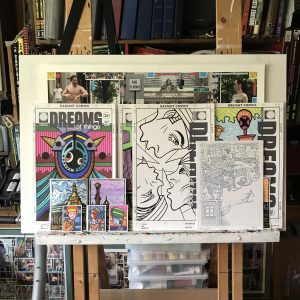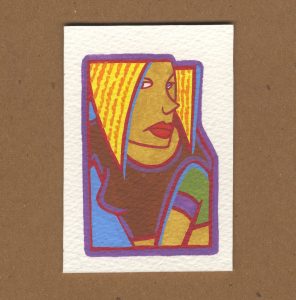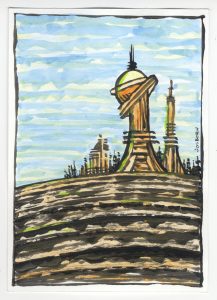I was thinking of things to make videos about earlier this week and I decided to pull an old Overstreet comic book price guide out of the closet. It came out in 1980 and it’s the tenth edition of the Overstreet guide. It was the first comic book price dude I ever bought and I was thirteen or fourteen years old when I first got it. I haven’t made a video about it (at least not yet) so I thought I’d write a little something.
First off it’s got an Alex Schomburg cover. This may have been my first exposure to him and I wasn’t impressed. It’s a World War Two cover featuring Captain America, the Human Torch, and Namor fighting Nazis. I remember it looking very old fashioned to me and now as I look at the cover it’s done in a weird style. Some of it is traditional line art with color inside the line and some of it (Namor) is painted with flesh tone lines. There is an awkwardness to it. I have long since found plenty of great Schomburg’s Golden Age covers from the 1940s to the 1950s. His covers are some of my favorites but not this one.
I can remember when I first bought this book I liked it not so much as a price guide, since I wasn’t buying a ton of old comics, but as a history book. It has all sorts of information on comics. For example I randomly opened a page and there is a listing for and old Marvel comic “Hedy Divine Comics.” It immediately tells us that it was formerly “USA” number 17 and titled “Hedy of Hollywood” from number 36 on. Number 22 came out in 1947 and number 50 in September of 1952. Then there is a note that says “18-21 exist?” Even the Overstreet guide did’t know everything about these obscure old comics.
The listing goes on further to tell us what issues had art with the more popular and famous artists in them. There are issues with Basil Wolverton and and some with Harvey Kurtzman art. I barely knew who those two guys were back then but now I knew some issues they drew. It was fascinating to me that I could open up to any page and learn something about comics that were made before I was born and knew nothing about.
Beside the price guide the book also has articles about comics. The first article is about grading comics and storing them. It has lots of stuff about bags, boards, and taking care of you comics. Serious stuff to a thirteen year old. That is followed by a 1979 market report. I had never seen anything like that before and was fascinated. It was all about a whole bunch of old comics that I had never heard of and that they were selling for record prices.
I got to see some old Schomburg cover printed about three inches tall in section called “Timelys – The Top Six” and “More Timelys” They had Sub-Mariner, Captain America, and the Human Torch comics in that section. Those were really cool to see. There was no internet and stuff like that was rarely reprinted back then so the price guide was the only place to see it. There is also a cover section in the back featuring random old comics from all sorts of publishers. That was also great. Where else was I ever going to see the bikini clad jungle woman who starred in “Zoot Comics?”
The book also has yellow pages in them. Ads that are actually on yellow paper. Ads for stores, ads for conventions, and a lot of ads for people buying and selling comics. I remember liking these ads because they made me feel connected to a larger comic book collecting community. There were people out there who liked comics as much as I did. Plus a lot of the ads had some nice art in them. There a few pieces by well known comic book artists that must have been commissioned by whoever was placing the ad.
Some of the ads even come with lists. Lists of prices of comics being sold and lists of prices for comics being bought. I think the buying lists were themes interesting to me fo how low the prices were. One ad says that he buys comics for 25% of the value listed in this guide. That taught me all I needed to know about selling comics. They probably were worth a lot less than anyone thought they were. With one hand the price guide giveth and with the other hand it taketh away.
Somewhere in the middle of the book is another article called “The Chronology of the American Comic Book.” That sounds pretty cool and it hits the highlights in only a few pages. But the one I’m really going to have to go back and reread is a 25 page article on the history of Marvel Comics. I don’t remember it at all but I must have read it a few times as a kid. As a fan of both history and comics this one was really up my alley.
And of course one of the fun things to do with old price guides is look up how cheap certain comics were back in the day. For example you could get a copy of the first appearance of Wolverine in “The Incredible Hulk” #181 for a mer $3.75. If you had the big bucks a copy of the first appearance of Superman, Action Comics #1, could be had for $9,800. Expect to pay over a million for that book today. And how much is the first appearance of Spider-Man in “Amazing Fantasy” #15 you ask? Well, that would be $900. It all sounds so cheap now but only if you have a time machine. Few people had ten grand lying around to get a copy of Action Comics #1.
Well, as any comic fan knows, we could sit around all day looking up nostalgia prices so I’ll cut it off here. Maybe someday I’ll make a video but until them writing will have to suffice.



